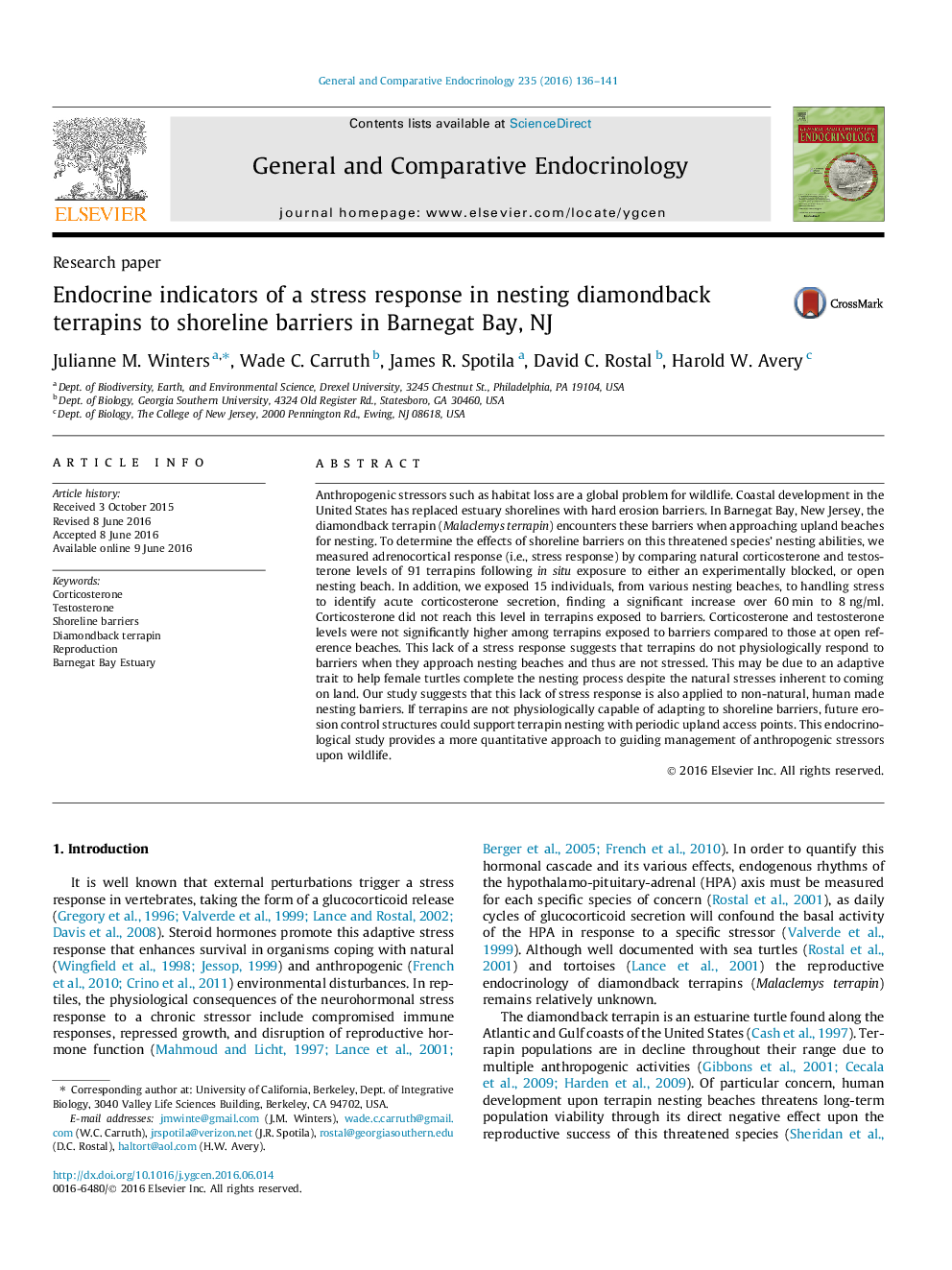| Article ID | Journal | Published Year | Pages | File Type |
|---|---|---|---|---|
| 2799770 | General and Comparative Endocrinology | 2016 | 6 Pages |
•We quantified the effects of shoreline barriers on an estuarine turtle’s adrenocortical response.•Corticosterone and testosterone were quantified in relation to nesting at blocked or open beaches.•Terrapins, while capable of a stress response, did not elicit this reaction to nesting barriers.•This study provides a quantitative approach to guiding management of human stressors to wildlife.
Anthropogenic stressors such as habitat loss are a global problem for wildlife. Coastal development in the United States has replaced estuary shorelines with hard erosion barriers. In Barnegat Bay, New Jersey, the diamondback terrapin (Malaclemys terrapin) encounters these barriers when approaching upland beaches for nesting. To determine the effects of shoreline barriers on this threatened species’ nesting abilities, we measured adrenocortical response (i.e., stress response) by comparing natural corticosterone and testosterone levels of 91 terrapins following in situ exposure to either an experimentally blocked, or open nesting beach. In addition, we exposed 15 individuals, from various nesting beaches, to handling stress to identify acute corticosterone secretion, finding a significant increase over 60 min to 8 ng/ml. Corticosterone did not reach this level in terrapins exposed to barriers. Corticosterone and testosterone levels were not significantly higher among terrapins exposed to barriers compared to those at open reference beaches. This lack of a stress response suggests that terrapins do not physiologically respond to barriers when they approach nesting beaches and thus are not stressed. This may be due to an adaptive trait to help female turtles complete the nesting process despite the natural stresses inherent to coming on land. Our study suggests that this lack of stress response is also applied to non-natural, human made nesting barriers. If terrapins are not physiologically capable of adapting to shoreline barriers, future erosion control structures could support terrapin nesting with periodic upland access points. This endocrinological study provides a more quantitative approach to guiding management of anthropogenic stressors upon wildlife.
